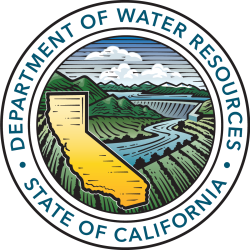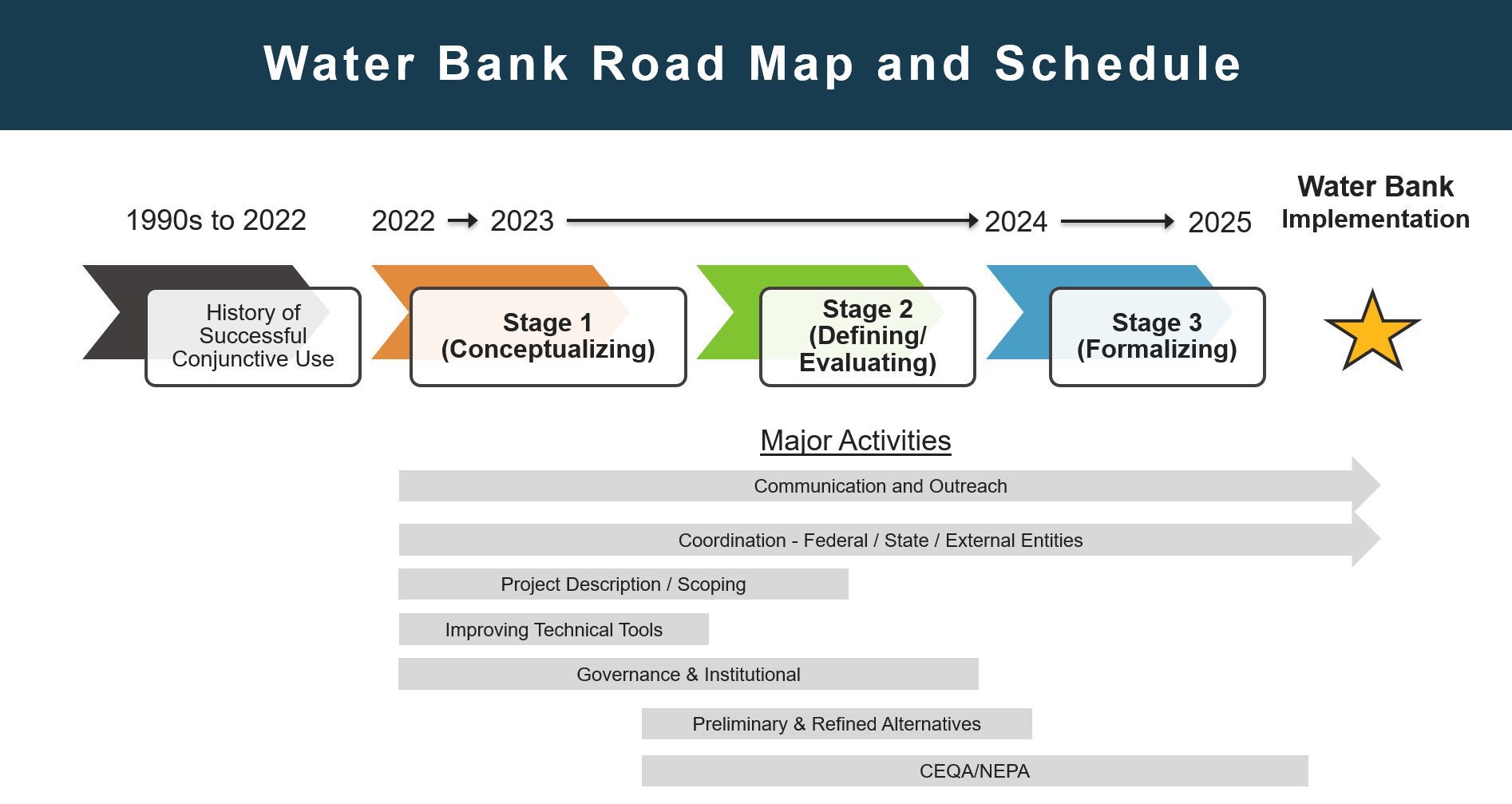WATER BANK PUBLIC ENGAGEMENT
The Regional Water Authority is engaging the public in a discussion about how water banking could expand and operate in the Sacramento region.
The goal of the Water Bank public engagement process is to share information, answer questions and gather input through a series of public meetings, called Stakeholder Forums.
ANNOUNCEMENTS
Notice of Public Scoping Comment Period (June 18, 2024). Click to learn more.

WATER BANK Q&A CONNECT
The Water Bank Program Team is addressing questions provided by stakeholders. Questions may include those from a single stakeholder, or the Program Team may combine similar questions and provide comprehensive answers about the Water Bank. Questions and answers are posted here on this page. Additional questions may be submitted to the Water Bank program.
Email questions to [email protected].
You can find questions from previous weeks here.
Theme: The connection between the Water Bank and Harvest Water
Question: What is the relationship between Harvest Water and the Sacramento Regional Water Bank?
Harvest Water and the Sacramento Regional Water Bank (Water Bank) share a common objective of replenishing groundwater resources to benefit both people and the environment of the Sacramento region. However, their scopes differ significantly.
Harvest Water is California’s largest water recycling project producing water for agriculture. Managed by the Sacramento Area Sewer District (SacSewer), Harvest Water uses advanced wastewater treatment to produce high-quality recycled water for delivery to farms, ranches, and rural landscapes in southern Sacramento County, overlying the South American Subbasin. Learn more at SacHarvestWater.com.
Harvest Water is currently under construction, and when fully operational in 2027, will supply up to 50,000 acre-feet of reliable recycled water annually—equivalent to 24,000 Olympic-sized swimming pools—to irrigate over 16,000 acres of agricultural land. This shift from surface water will allow the groundwater aquifer to recover naturally through in-lieu recharge, boosting the area’s groundwater levels by up to 35 feet within 15 years.
By improving groundwater conditions, Harvest Water will sustain over 5,000 acres of riparian and wetland habitats and 3,500 acres of Sandhill crane habitat, increase stream flows in the Cosumnes River to support Chinook salmon, and enhance habitats for a variety of additional listed species such as the Swainson’s hawk and Giant garter snake. The ecosystem benefits that Harvest Water will deliver are defined in a funding agreement with the State of California, which provides $291.8 million in funding to make Harvest Water a reality. Those benefits are rooted in raising groundwater levels in the program area.
Both Harvest Water and the Water Bank rely on in-lieu recharge to enhance groundwater levels, but they differ in their source water and location of recharge. Harvest Water provides recycled water to irrigate agricultural lands and enhance existing habitats overlying the South American Subbasin, while the Water Bank capitalizes on excess water from rain and snowmelt to serve municipal water customers overlying both the North American and South American Subbasins.
Importantly, both projects will use an accounting system for tracking water deposited and withdrawn from the groundwater aquifers.
SacSewer will track recycled water deliveries and use a monitoring well network within the Harvest Water service area to track progress toward realizing project benefits associated with increased groundwater levels. Approximately 20 years after recycled water deliveries begin, once the groundwater levels recover and the basin is in sustainable excess, a portion of the groundwater stored in the basin could be available in the future for potential groundwater accounting partners, such as growers and local municipalities to use in dry years instead of fallowing land or enduring shortages. This volume of stored water available for future extraction is limited to no more than 30 percent of the total in-lieu recharge. This leaves at least 70 percent of the recharged water in the aquifer to benefit habitat and streamflow, which is a primary objective of Harvest Water. The Water Bank is also implementing an accounting system, and the two projects are coordinating on common methods and approaches to accounting. Both Harvest Water and the Water Bank are committed to the principle that more water must be deposited into the aquifers than is withdrawn.
Both projects will be managed consistent with the Groundwater Sustainability Plans (GSP) developed in the North American and South American Subbasins and will play a vital role in the continued sustainable management of the aquifers under the Sustainable Groundwater Management Act (SGMA). Of note, Harvest Water is a Project and Management Action specified in the Groundwater Sustainability Plan for the South American Subbasin, and thereby, is being relied upon by the Groundwater Sustainability Agencies to assist in meeting their ongoing objectives outlined in the Plan. Both projects are identified in South American GSP, and the Water Bank also identified in the North American Subbasin GSP as a Project and Management Action.
Together, Harvest Water and the Water Bank exemplify a multifaceted approach to water stewardship, bridging the gap between agricultural and urban water needs while championing environmental sustainability.
Foundational Document on Governance Structure for the Sacramento Regional Water Bank
The Regional Water Authority (RWA) has released a second foundational document for the Sacramento Regional Water Bank, marking another significant step forward in defining the organization, management, and operation of the Water Bank to enhance climate resiliency and environmental stewardship in the Sacramento region.
second foundational document for the Sacramento Regional Water Bank, marking another significant step forward in defining the organization, management, and operation of the Water Bank to enhance climate resiliency and environmental stewardship in the Sacramento region.
Titled “Governance: Organizational Framework, Functions, and Associated Roles and Responsibilities,” this document delineates the essential functions and activities vital for the successful implementation of the Water Bank. It introduces an organizational framework and outlines associated roles and responsibilities embedded within the Water Bank’s structure.
You can read the full document here.
Highlights include:
- Functional Areas: The document categorizes necessary activities into four functional areas—Policy and Legal, Operations, Administrative, and Outreach activities. These are informed by established guidelines and regional experiences, particularly from recent groundwater substitution transfers.
- Organizational Framework: The Water Bank’s implementation activities are envisioned to be carried out by three primary parties: Participating Agencies, Coordinating Body, and Planning/Technical Support. Importantly, the framework is designed to facilitate effective collaboration without overshadowing or restricting the autonomy of existing agencies.
- Roles and Responsibilities: Detailed tables in the document outline the roles and responsibilities of each party across various implementation activity groupings. This transparency aims to foster clear accountability and efficient collaboration.
- Key External Entities: The Water Bank will engage with external entities such as banking partners, regulatory authorities, and stakeholders, with the document defining the roles of these entities.
The “Governance: Organizational Framework, Functions, and Associated Roles and Responsibilities” document is part of a series aimed at introducing and explaining the processes and considerations involved in implementing the Water Bank. The documents cover different aspects:
- Vision and Strategy: Released in June 2023, outlining goals, objectives, principles, and constraints. You can find the GOPC document here.
- Structure: The current document, focusing on the organizational framework, functions, and associated roles and responsibilities.
- Operations Support Tools: Will cover water accounting, monitoring, and reporting.
- Agreements and Finance: Will describe the framework to encourage water banking and establish roles and responsibilities in the financial aspects.
Please note that “Governance: Organizational Framework, Functions, and Associated Roles and Responsibilities” is “living document,” open to periodic revisions as Water Bank implementation progresses.
WATER BANK STAKEHOLDER FORUMS
Materials from the First Stakeholder Forum Held October 26, 2022
The first Stakeholder Forum explored key topic areas such as water sources and management in the Sacramento region; projected impacts of climate change on the region’s water resources; how water banking works; how a Water Bank could help the region adapt to climate change; and other topics.
Materials from the Second Stakeholder Forum Held February 13, 2023
The second Stakeholder Forum explored the proposed goal, objectives, principles and constraints for the Sacramento Regional Water Bank, a groundwater storage program utilizing the expansive reservoir under the urban core for storing water during wet times for use during dry times.
- Recording of Stakeholder Forum #2
- PowerPoint presentation slides
- Questions submitted during Stakeholder Forum #2
- Proposed Goal, Objectives, Principles, and Constraints
Materials from the Third Stakeholder Forum Held December 12, 2023
The third Stakeholder Forum provided an update about progress on the Water Bank and plans for 2024 and beyond.





